Warhammer 40.000 Adepta Sororitas Battle Sanctum
Games Workshop revisits the Sector Imperialis terrain range for Warhammer 40.000 and adds a Sororitas themed building to it - the Battle Sanctum.
The Sector Imperialis building and ruin sprues were introduced along with Kill Team and came with multiple boxed sets. I've covered the Basilicanum back in 2018 from that range.
This new Battle Sanctum comes in a large boxed set and costs 85 EUR. It covers 6 sprues in total, combining already available as well as new designs. You have three large regular wall and floor tile sprues, a small one with toppers and railing, and a large one featuring a statue of Saint Celestine. This kit covers the rules for the Battle Sanctum as well, providing boni for the Adeptus Ministorum.
The six sprues in this set cover a total of 134 plastic pieces. Every sprue is included once, besides the one covering the parts of the octagonal design is in there twice.
These two are new designs, the statue of St. Celestine, incl. a base and a small sprue with the railings and half-high pillars. These parts are later used on the top floor and the balcony.
The new sprue for the octagonal build is included two times and includes prolonged wall pieces to cover the angle, as well as diagonal parted floor tiles. The second and third sprue are "old" designs featuring walls, pillars, half ruined wall pieces and floor tiles. Those were also included in the Basilicanum.
Casting is well done. The details are present, not super crisp but sharp enough for terrain and the mould lines were less present than the first batch. The sprues are well used and densely packed with bits.
As with the Basilicanum, we start with the statue. Saint Celestine comes with a small octagonal base, covering a lot of skulls. It is very cleverly designed. The undercuts complete eachother and a sculpt like that, would have been made in resin a while and not possible with plastic. The skulls are kept in scale with the statue, which is a bit weird, as they are quite large and I think it would have made more sense if they were 28-32mm scale. There are a few stripes of candles, that can be freely put upon the edge of the base.
On top of that we put the actual statue. Saint Celestine wears a body armour and has a flowing tabard - and bare arms and feet. The design is very clear and vivid, so you could probably use the model for Inquisitor or similar as a regular model and not just as a statue.
Saint Celestine carries a sword and a torch, along with two shoulder pads, and can be added to the socket. Fit so far is very well and without any problems. The pieces cover eachother properly and the gaps are minimal.
The last bits for the statue are the wings and the halo. Depending on your gaming needs, you might want to magnetize the wings or even leave them off, if you intend to travel with your terrain. Otherwise, add them as they make for a great and impressive pose.
After completing Saint Celestine, let's head over to the building itself. As mentioned above, we have new pieces.
In the first one you can see the triangle floor tiles, next to the ruined and intact floor tiles. These new tiles make the octagonal building possible. As for the wall pieces, we have ruines and intact walls, as well as the longer ones to go with the angled floors.
The Sector Imperialis is highly modular, so you can combine walls through the pillars in a lot of different ways. You can build them straight, angled or zig-zag.
The bottom floor is a quite large and open c-shape. We begin with the right "wing" combining a long, regular and damaged wall piece with pillars.
A regular wall piece is used as a front to join both sides. Be aware that there are new shaped pillar tops to complete / cover the later added floor tiles. For this wall piece it is important to cut of the top floor blind, as the floor will go over this piece. Keep that cut off bit, as it might come in handy later on.
The other side is basically mirrored, with a damaged, a regular and long wall pieces, and joined to the other side.
As you can see this creates a quite massive, open C-shape of walls. You could imagine an altar or something similar of the imperial church in there.
A very interesting detail of this sanctum is the balcony. It raises above the front of the building and is the reason why the blind had to be removed from the mid-wall piece. The floors are large enough that they sit on the rim of the walls, but the smaller ruined / damaged floor pieces are added by using the top lights as connectors from the bottom.
There are lights and ruined pillar tops that are added to the outer pieces. This was the only step, that I had problems so far, as the hanging light on the right corner of the balcony, didn't want to fit the groove-and-tongue connection.
The second floor is build in a similar way to the ground floor, we begin with a regular, long and ruined wall piece. Just one section short and directly including the front, with a door. Side note, I found it a bit weird, that we didn't have a door on the ground, but the sprue only cover one and that part is needed to provide access to the balcony. You could cut out the door if you want to, to create an open way.
The left wing of the second floor is added, being build from a long and a ruined wall piece. Creating a smaller open c-shape.
Of course, these steps are only one of many ways to go and if you want to keep it with the included instructions. You could build a longer octagon and put the statue in the middle, creating a large ruin, or put them on top of each other to have a very prominent terrain feature on your table.
Next step is the roof for the second floor. Once again here are the top lights used to connect smaller, damaged floor tiles to the larger ones. I have to say, this construction is not well planned. The sides of these floor pieces are not entire flat and have a bit of play. So a substructure or more connectors would have been a logical and practical addition, to provide a less fragile build. As the parts themself are quite massive, they will sink while the glue settles.
Two ruined pillar toppers and a few floor corners to close that layer are added and we are almost done.
Now were heading for the pieces from the new small sprue with the railings and third-height pillars. These could be used to form a marked area in front of the building, maybe marking a raised deck. But in this case they are placed on top of the roof.
As well as to create a railing for the balcony itself.
And now all pieces combined, including the statue. What an impressive sight. Celestine is around 20 cm high, the sanctum itself lands at around 30 cm. Combine the two and you are at almost half a meter of terrain.
The statue is quite present, we've elaborated that throughout the review, the Sector Imperialis buildings are as well. I've added multiple scale comparisons in the article on the Basilicanum (incl. comparison to older and other terrain sets). The statue itself could be used for Adeptus Titanicus as well, as the statue is taller than a Warlord Titan.
And we have a few spare parts on hand to further toy around with after we've completed the Battle Sanctum. You remember the blind we had to cut off from one of the wall sprues? That comes in handy, if you want to cover the sides, or maybe the lower blind of the balcony.
Conclusion
The battle sanctum is a very prominent terrain piece and the addition of new angled pieces, gives you more creative to work with. The octagons and angled walls could be build before, but caused a lot of work with the floors. So that is benefitial. Now we just need easier or more prominent access to that sprue.
Pricing is an issue. At first I thought, well, that's 25 EUR for the statue and 60 EUR for the building itself. That is not cheap, but okay-ish. But when I compared the price with the Basilicanum, which is 5 EUR cheaper, covers statues as well and even more sprues, it is a bit odd and feels out of place. For my taste, a 65 EUR price tag would have been a better choice, as from the value it is closer to the Sector Imperialis Sanctum. I guess if you combined the Battle Sanctum and the Imperialis Sanctum, that would make for a very impressive ruin of a church, with the side stanchions and all.
These terrain kits fit very well with Warhammer 40k, providing proper amount of coverage, even for larger models and the more and more present monstrous kits. For skirmishers, like Necromunda for example, I think they are a bit to high / large. Yet, provide proper playability, as the heights of the floors makes it possible to easily access and position models, without the risk of moving everything else by mistake.
Warhammer 40.000 is a brand by Games Workshop.
The reviewed product item was provided by the manufacturer.






















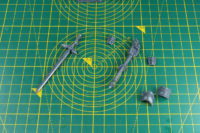




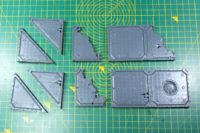



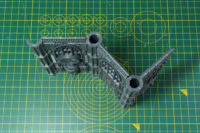




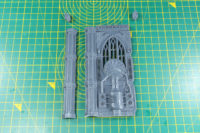






















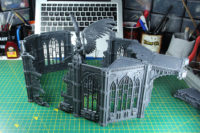










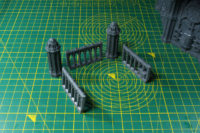






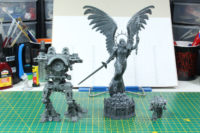














Leave a Reply